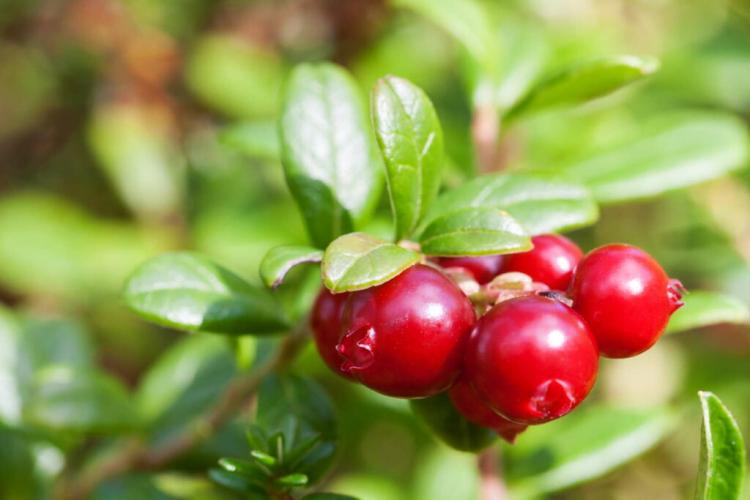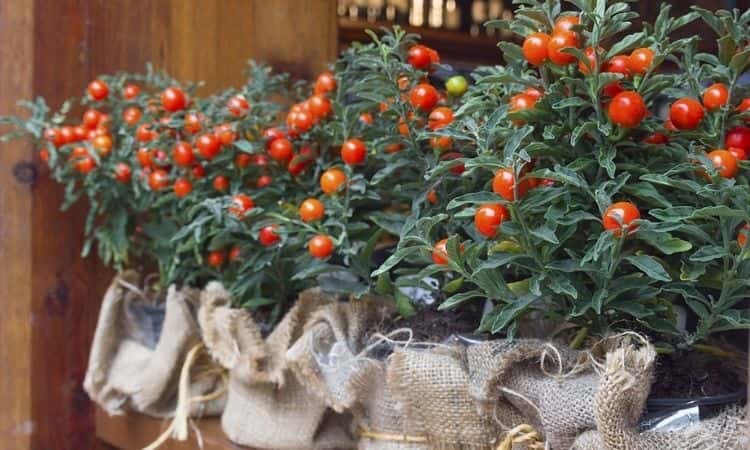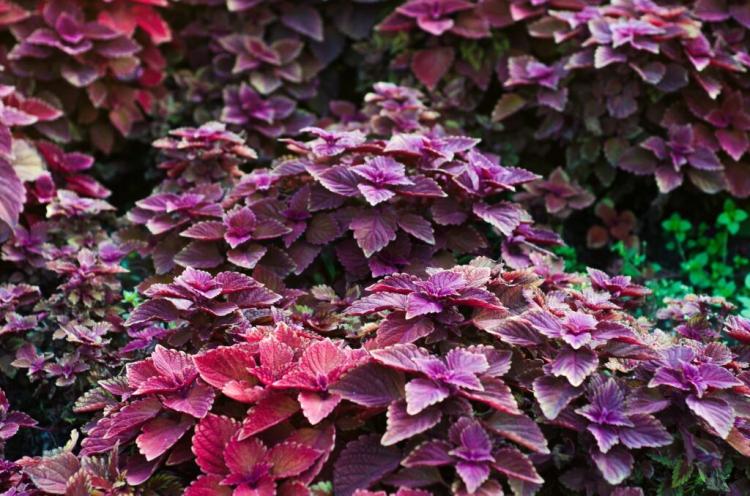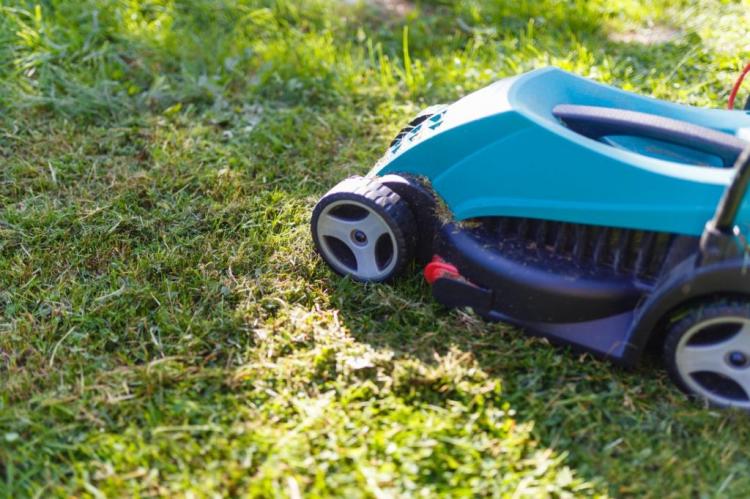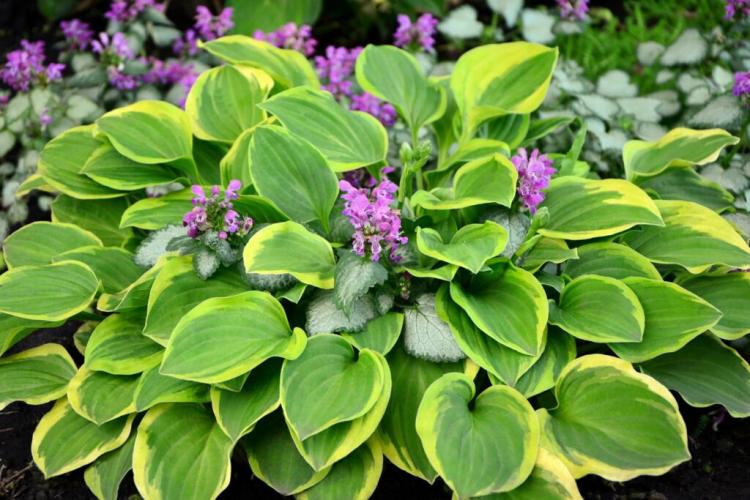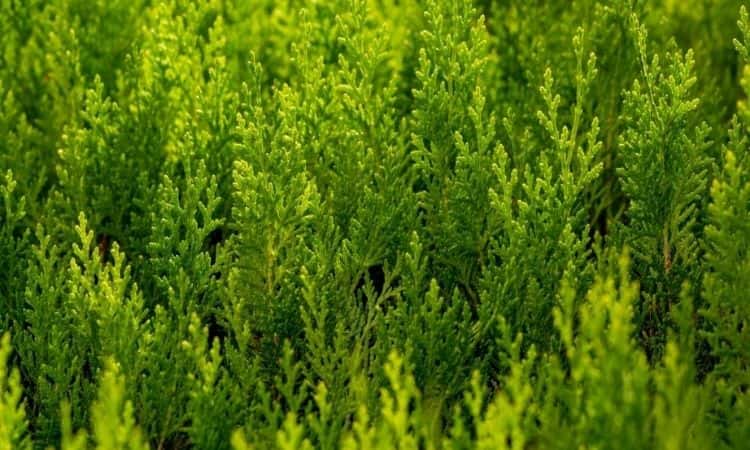Cupressus: Expert Tips For Planting And Caring
Cupressus spread a pure vacation mood. Here you will find the best species and learn what you should consider when planting and caring for Mediterranean plants.
Cupressus: Origin and characteristics
Table of Contents
The epitome of every Tuscany landscape is the towering Cupressus that line streets and paths or set accents between Mediterranean stone houses. But the plants are not only at home here. Cupressus species can also be found in other warm regions of the northern hemisphere. Especially in Asia, but also in northern Africa and in warm regions of North America they can be found. 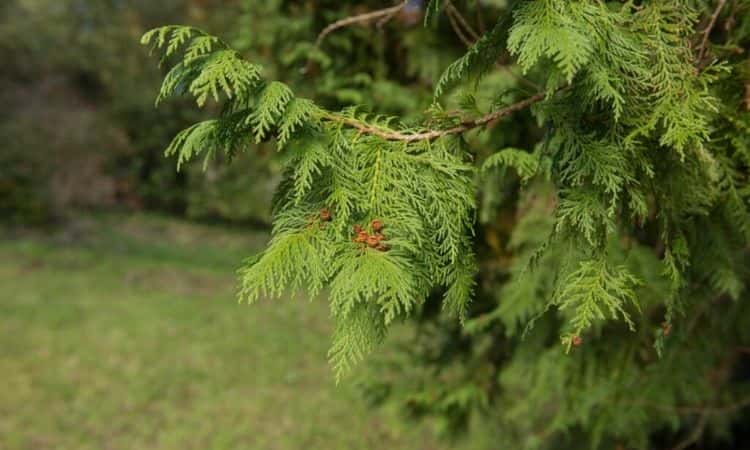
Cupressus species and varieties
At least 16 tree species are known worldwide, but only a few of them are cultivated in Central Europe as ornamental plants. Not all species are sufficiently hardy and humidity and precipitation are limiting factors. Very special species are therefore rarely found in the trade. We introduce you to the most common species that can also be kept in this country:
- Mediterranean Cupressus (Cupressus sempervirens). They are the ones that shape the landscape of the Mediterranean and Tuscany. Their columnar growth form makes them extremely striking landscape elements. Unfortunately, they are not particularly frost-resistant, because temperatures below -5°C over a long period of time can cause severe damage.
- Leyland Cupressus (Cupressocyparis leylandii) is perfect for beautiful and dense hedges. The robust plant is a hybrid of Xanthocyparis nootkatensis and Cupressus macrocarpa. Thus, the Leyland Cupressus is not a fully flowering plant in the true sense of the word, as one of the mother plants is a Chamaecyparis. But that doesn’t matter, because it is wonderfully suited for gardens and grows extremely lush at up to one meter per year. Even in cold winters, this species survives without problems. Leyland Cupressus is available in yellow or green. Depending on your taste, you will certainly find the right specimen here.
- Cupressus cashmeriana comes from Bhutan. In Tibet and Nepal, it is often planted in front of temples. Its blue-green, scaly leaves hang down from the branches, which gives it a beautiful overall appearance. However, this species is not hardy in our latitudes and is therefore rather rare.
- Cupressus duclouxiana originates from the mountain forests of China, where it can be found up to over 3000 meters altitude. Even though the species is often used as an ornamental plant in this country, it is only conditionally hardy, -12°C is the absolute minimum that the Yunnan Cupressus can tolerate.
- Cupressus macrocarpa enjoys worldwide popularity. They are often found in the gardens of New Zealand and on the American coast, but can also be seen in this country from time to time. Their frost tolerance is between -6 and -12 °C. In harsh climates, the plants can be tempted by strong winds to form bizarre shapes. The cultivar ‘Goldcrest’ is often called room or gold Cupressus because its leaves shine in a rich golden green. It is not hardy, but it is an excellent houseplant.
- A suitable alternative to Cupressus is the much more cold-tolerant Chamaecyparis. Apart from the somewhat flatter leaves, they look very similar to Cupressus.
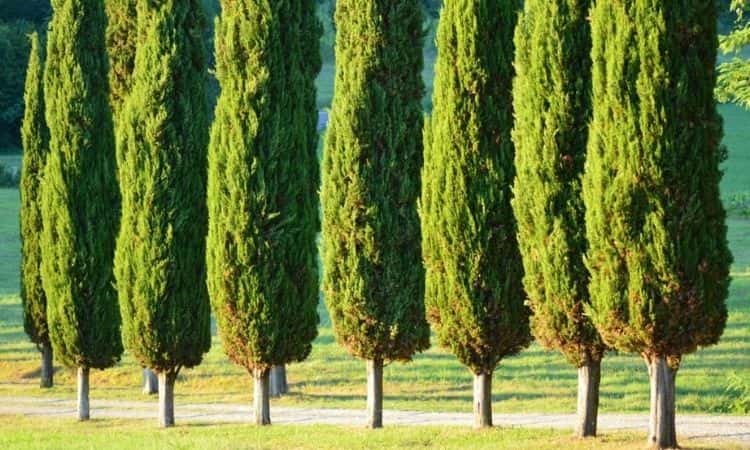
Plant Cupressus
Small trees soon develop into truly splendid specimens. Keeping distance is the motto when planting the plant. You should keep at least a one-meter distance from your neighbor because of the growth. When planting hedges, of course, a sufficient planting distance is also necessary. 50 centimeters should be the minimum here.
In addition to distances, stability is also of great importance. The especially Mediterranean Cupressus grow very high and should therefore be planted carefully and firmly.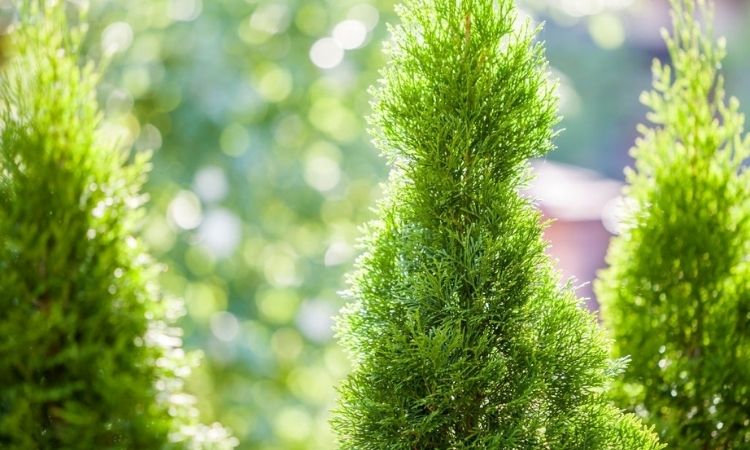
The perfect location for Cupressus
As inhabitants of warm and sunny places on this earth, Cupressus prefers a sunny to semi-shady location. You should also attach special importance to protection from the wind. Most Cupressus are not very hardy, but a sheltered location – for example, near a wall – is of great use against cold winds. The plants like to stand with their feet in sandy-humic soil, which provides many nutrients, but is also permeable to water. A slightly acidic pH value between 5 and 6 is optimal.
Unfortunately, even under these conditions, not all regions are suitable for all the plant species. There are few problems with Leyland Cupressus, but especially the Mediterranean Cupressus should only be planted in mild regions such as many places in North Rhine-Westphalia or wine-growing regions.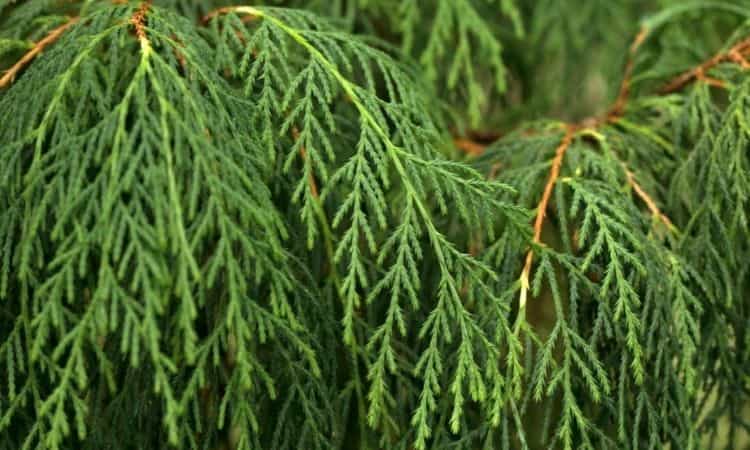
The correct procedure for planting:
- Plant out young plants only from a height of one meter, as they are then much less sensitive to frost.
- Cupressaceae can be planted out between September and May.
- Dig a big hole.
- Fill the lower layer with loose excavation; if necessary, add some sand or gravel to increase water permeability.
- Take the root ball out of the pot and loosen it up a little by hand.
- Place the root ball in the hole in the ground and fill the hole with excavation.
- Press earth lightly and pour on Cupressus.
- It helps to spread a layer of bark mulch around the plant so that the soil dries out less quickly.

Plant in a pot
Keeping the plant in the pot is a good alternative if the region is too cold to plant the much longed-for Cupressus. In this way, you can move the plant to a suitable location over the winter. Planting in a pot is done according to the same principles as planting outdoors.
Also, a layer of gravel is recommended as drainage at the bottom of the pot. It is also very important that the pot is of sufficient size, otherwise straight columnar Cupressus will quickly start to tip over. A large pot also has the advantage that you need to water a little less because more water can be stored in the pot.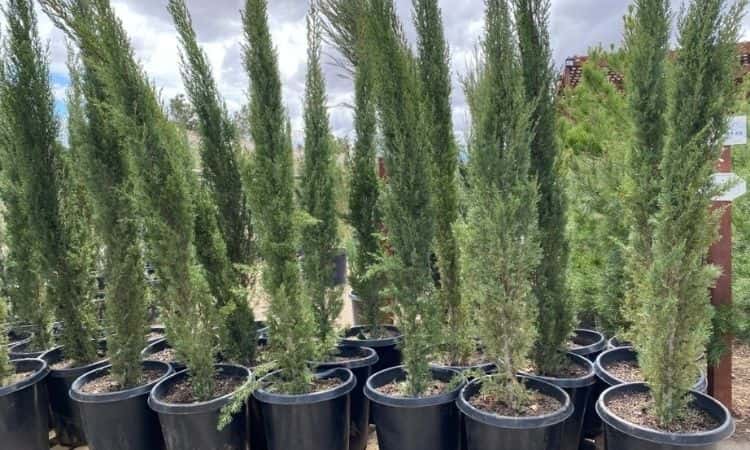
Caring for Cupressus
With the right care, Cupressaceae rewards us with a year-round green leafy coat. They are not even very demanding in terms of care. If the location is the right one, then they don’t really need anything else – except perhaps a little water on some days and in winter, if necessary, protection from the cold.
The most effort is probably the annual pruning. Apart from that, Cupressus is a very relaxing plant for the house and garden. Of course, potted plants always need a little more attention than planted specimens.
Watering Cupressus
Depending on the species, the plants need sufficient water. Especially Monterey and Yunnan Cupressus are used to moisture. A layer of bark mulch prevents too much water from evaporating and keeps the soil moist. Outdoors, plants usually get enough water.
Only in dry summers and also winters should you nevertheless water them from time to time. The plant in their winter quarters should of course also not dry out. Make sure that the soil remains slightly moist, but not wet.
Cutting Cupressus
Cupressus are wonderful ornamental trees and bushes for the garden. Fast growth is one of their specialties and also their tolerance for cutting is extremely good. Since they are also evergreen and extremely dense, they make a wonderful picture as a screen and hedge. However, to prevent them from becoming overgrown, they require regular pruning. Once a year is a rule here, although Cupressocyparis leylandii can also be pruned twice a year.
The right time to cut
Regarding the timing of the pruning, Cupressus is fortunately not so squeamish due to their vigor. Please note, however, that garden shrubs of any kind must not be pruned too much in the period from March 1 to September 30. This also applies to Cupressus, of course. This rule is intended to prevent birds and other animals from being disturbed while nesting.
The weather on the day of the pruning is essential for the time of pruning. Prunings are sensitive and direct sunlight can cause burns, in rain fungi and infections penetrate and frost and cold also cause damage. Therefore a mild and overcast day in October is optimal.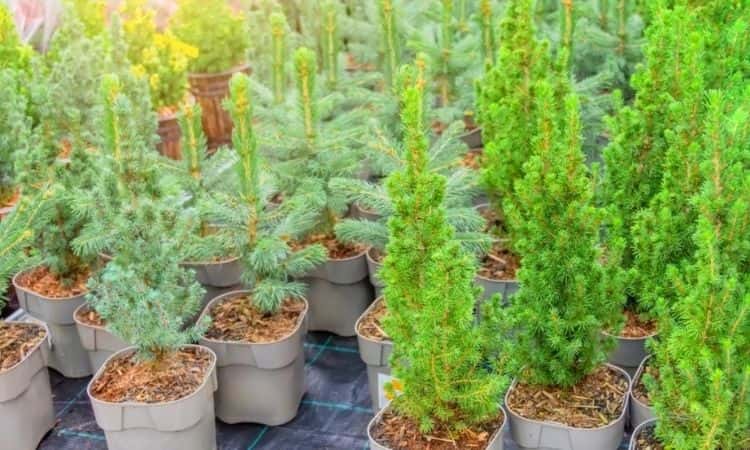
How to proceed when cutting
Not all Cupressus is the same. At least 16 species – depending on how the individual species are classified – the genus of Cupressus alone counts. And then there is of course the related Chamaecyparis, which are often mentioned in the same breath.
Although all the related species are quite resistant to pruning and are fast-growing, you should adapt the pruning to the growth. Cupressus sempervirens, for example, grow quickly at the beginning, but the larger they become, the slower their growth becomes.
About the pruning technique, as with other shrubs, it is also important to create an angled cutting edge. This prevents water from standing on the edge and makes it harder for fungi and diseases to grow. Of course, you should always use sharp and clean pruning shears.
But before you start, you should be aware that removing the top of the plant has far-reaching consequences. If it is cut off radically, it will also remove certain cells responsible for height growth.
As a result, the Cupressus will no longer be able to grow in height but will continue to grow in width. This leads to a permanent, strongly altered growth form. The best way to support the natural form is to cut back. For this purpose, you should trim the sides in particular. If you do not do this, the Cupressus can gradually become bald from the inside out.
When cutting, however, make sure that you do not get into the brown and dead branches, because these gaps may never close again. Radical pruning should therefore be done with caution and should be spread over several years.
If you would like to plant the Cupressus as a hedge, you can also support their natural growth. Especially with Mediterranean Cupressus, this leads to a beautiful picture. However, some species such as the Leyland Cupressus are also suitable for the typical hedge cut.
Procedure for cutting – the most important points:
- Use clean and sharp tools.
- Bevel cutting edge.
- Do not cut off the tip in order not to disturb the natural growth form.
- Trim pages to prevent clogging.
- Stay in green leaf areas, do not cut the brown areas.
- Leyland-Cupressus is also suitable for hedge shape.
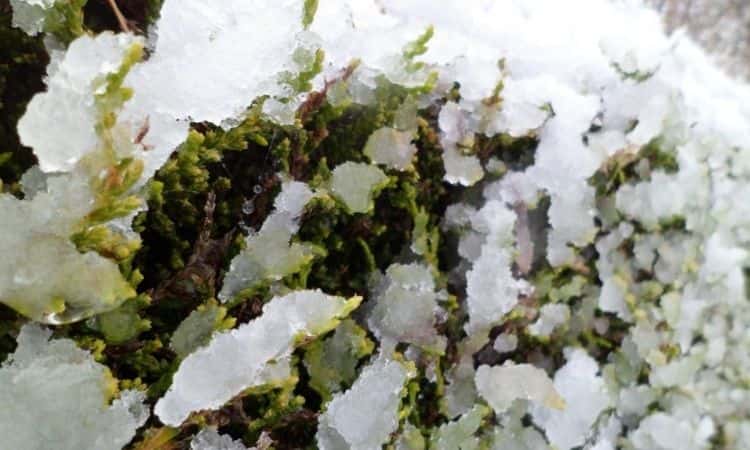
Сupressus hibernate
Cupressus originate from the warmer climates of the world. For this reason, not all species are hardy. However, some, such as the Leyland Cupressus, are sufficiently frost-resistant and can survive the winter outdoors without protection. For more sensitive species such as the Monterey Cupressus, a light-colored fleece helps to protect them from excessive sub-zero temperatures. This can be used to wrap the tree when severe night frosts threaten.
Cupressus in a tub must be additionally protected with bamboo mats or similar to prevent the root ball from freezing through. Wrap the mats generously around the pot and also place a mat under the pot.
If you have a room Monterey Cupressus in your living room, you should move it during the cold months. The plant needs its winter rest and then feels comfortable in a cool place at 5 to 10 °C. However, since it needs sufficient light even in its winter quarters, a cold house or a cool aisle with a window is perfect.
Propagating Cupressus
Even though Cupressus are known for their lush growth, their offspring is a lengthy process. They germinate very slowly and even the cuttings take many years to mature for the garden.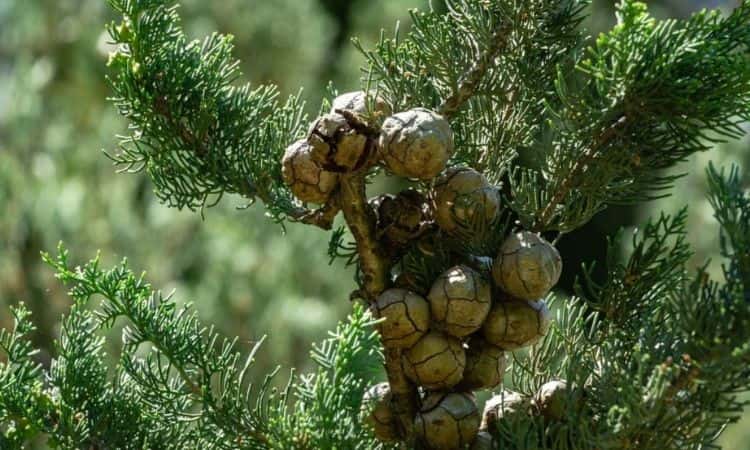
- Propagation by seed: The tree are of separate sexes, so the plants have male and female flowers. Only from fertilized female flowers, a cone develops, which carries the seeds. But for these to germinate, the cone must mature on the plant for several years, or at least two. And then it becomes exciting. Since Cupressus come from warm regions with a relatively high risk of forest fire, they have adapted. So that new Cupressus can quickly gain a foothold after a devastating fire, the cone only opens when exposed to great heat. This ensures that numerous seedlings grow up directly after a fire. To get the seeds, you should place the cone on a warm heater until it opens. The seeds are sown in normal growing soil. At about 10 °C and a moist substrate, the young plants will develop after a few months. However, many years will pass before they reach an attractive size.
- Propagation by cuttings: Propagation by cuttings is somewhat faster, although not significantly so. In spring, cut a lignified branch from the tree that is about ten centimeters long. Then break off all secondary branches in the lower part of the cuttings on the branch. The roots will later develop in these places. Now you can put the cuttings into moist soil. A transparent bag helps to keep the soil moist. It is best to take several cuttings at the same time since often not all of them will be successful.
Are Cupressus poisonous?
When cutting plant, the spicy scent of the Cupressus will strike you. It is caused by the poisons the plant stores in its food. Although they have a healing effect in small doses, they are poisonous to humans and animals when consumed.
Therefore keep grazing animals or rodents away from the plant. You should also be careful with young dogs because they like to gnaw on everything that gets in their way.
As a matter of principle, small children should not be left unobserved in the vicinity of the plant. It is best to teach your children early on that Сupressus are poisonous.

